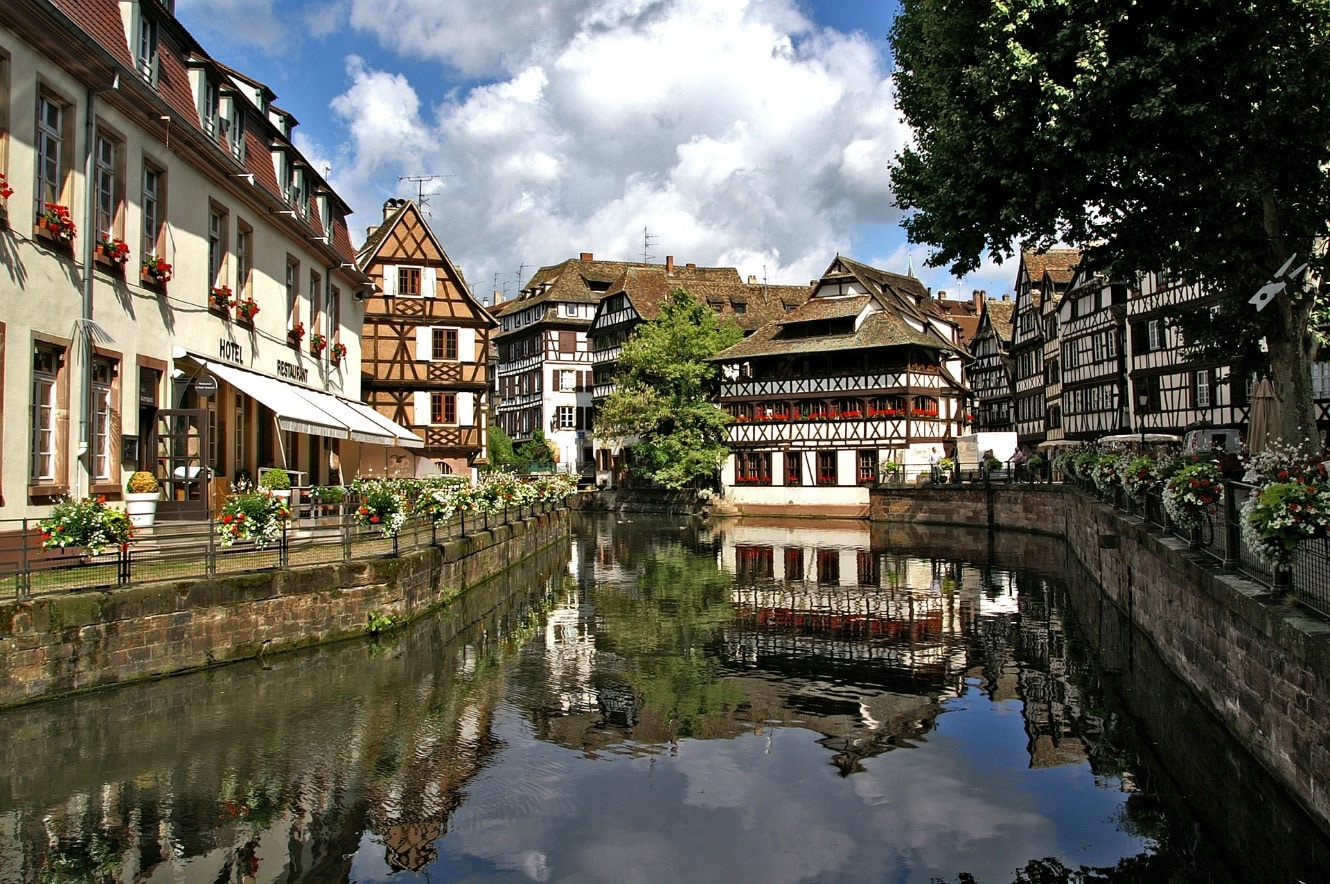Straddling the border of Germany in the historic region of Alsace, Strasbourg has long been exposed to foreign influences. Formerly ruled by the Germans from 1871 until the end of World War I, it was again occupied by them during World War II from 1940 to 1944. Now it’s home to prestigious European institutions, adding another foreign accent. Yet, it remains unmistakably French.
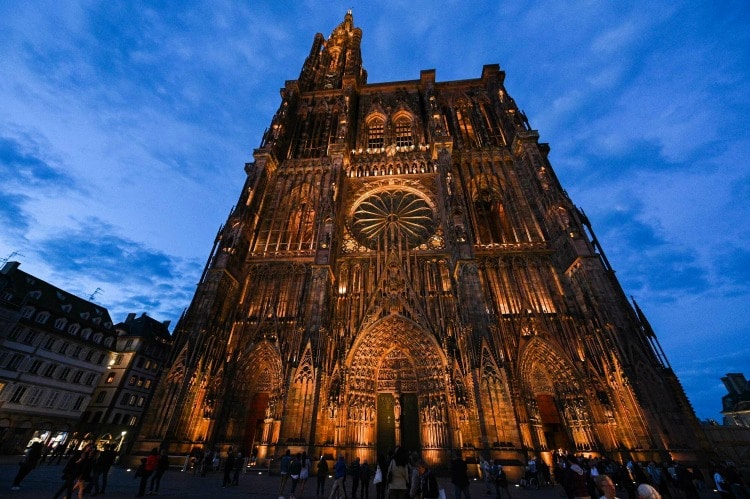
48 Hour Tour
To experience the unique French flair of this international city, spread your exploring over two days. Start your visit at the Cathédrale Notre Dame de Strasbourg which Victor Hugo described as a “Prodige du gigantesque et du délicat,” (a prodigy of the gigantic and the delicate). A favorite likening of mine is the ebullient description by Géraldine Amar from the Tourism Office. “I like to call it our pink giant covered in delicate lace,” she says.
This Gothic Cathedral on the Grand Île, which became a UNESCO World Heritage site in 1988, is indeed a marvel of extraordinary size and ornamental features. Construction began on it in 1015 with the intricate and elegant spire completed in 1439. At 466 ft, the Cathedral remained the highest building in the Christian world until the end of the 19th century. Alas, only the original footprint and the crypt remain.
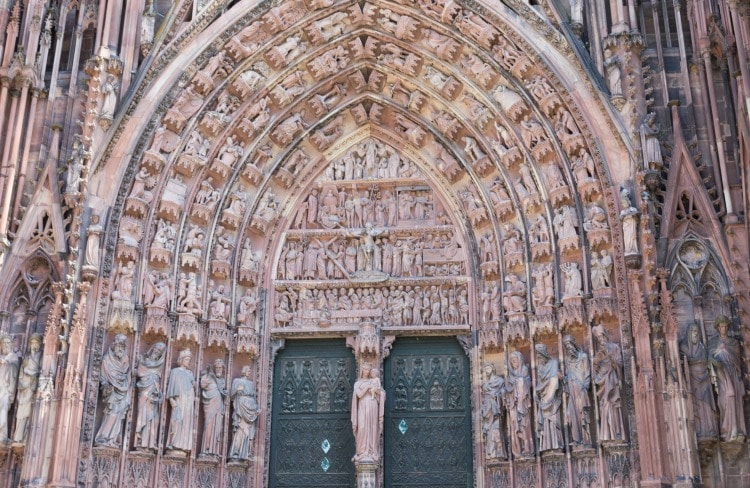
Hundreds of both large and small richly carved sculptures representing various religious events adorn its exterior and the color of the pink sandstone changes with the time of day. The most dramatic view is at sunset when the setting sun’s rays turn it into a big ball of fire.
Inside, magnificent sights await. Stained-glass windows from the 12th and 14th centuries frame the enormous nave, which is 207 ft. long, 118 ft. wide, and 105 ft. high. Look behind to admire the Great Rose Window above the grand portal.
High above, in a bird’s nest on the northern side of the Cathedral, is the dazzling pipe organ, richly decorated in gold, red and blue filigree. The organ has two automats: a man with a trumpet (which moves) wearing the arms of the city on a flag and a bearded bushy-haired man, supposed to be a pretzel vendor (his head moves from side to side and his tongue sticks out). Inside the tribune of the organ, a man hiding in a small trap screams insanities. They are called Roraffen (screaming apes) and date back to the 14th century. All of them are activated every two years during an organ concert on the evening of Whitsun Monday (Monday after Pentecost).
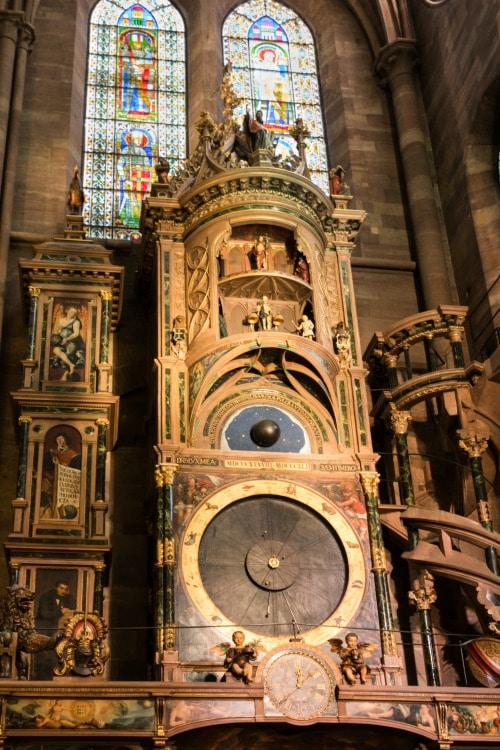
The Renaissance-era astronomical clock (with current mechanism dating from 1842) is a masterpiece, resulting from the combined work of artists, mathematicians, clockmakers, and technicians. Besides the time and date, its numerous dials display a plethora of additional data, such as the phases of the moon and planetary positions. The main attraction though, is the performance of its animated figures every day at 12:30. A child, a teenager, an adult, and an old man, each representing different stages in life, parade past Death. Higher up, the 12 apostles walk before Jesus, accompanied by the beating of wings and the sound of a large cock crowing. In front of the clock is the huge Pillar of Angels, representing the Last Judgment. A short video is shown every day except Sunday at noon for anyone interested in its history.
So very popular with tourists, these performances are standing-room-only. Entrance is at the South Portal which opens at 11:30. You can purchase tickets there starting at that time or at the postcard stand from 8:30 to 11:00 am. Get there well ahead of time to secure an unobstructed spot for the performance.
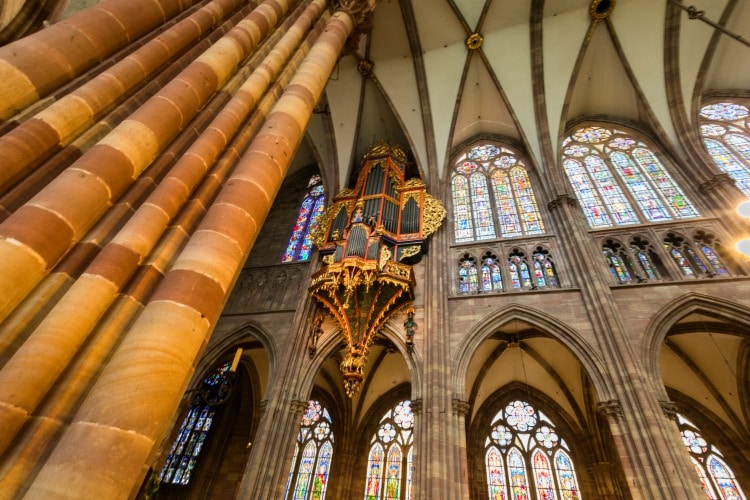
Vintage Wines
Wine vintages can mean different things to different people. At the Cave Historique des Hospices de Strasbourg we’re talking about serious, historic wines. This cellar was founded in 1395 in the basements of the city’s hospital. Kind of a weird location for a wine cellar, wouldn’t you say? But there’s a logical explanation: in medieval times, people did not have the means to pay for medical services, so patients often donated grapes from their vineyards and even transferred some of their land.
Shielded behind protective gates, three historical barrels dating from 1472, 1519 and 1525 are the pride and joy of the historic cellar. One of them contains 350 liters (92 gallons) of wine from 1472, the world’s oldest wine aged in a barrel! Since that time, this wine has been served only on three occasions, the last being in November 1944 to General Philippe Leclerc de Hauteclocque, who liberated the city from German occupation.
Today, this vaulted 1200 square meter cellar has been converted to a museum, displaying items such as an antique wine press. But it’s also a working winery, and select wines are stored and matured here in oak barrels. A selection of the best Alsatian wines is also available for sale.
The website for the wine cellar couldn’t have said it better: “The wines of the historic wine cellar of Strasbourg Hospices have a soul. They symbolize ancestral tradition and know-how, the generosity, diversity, and beauty of Alsace.”

Château Musée Vodou
The Voodoo Museum houses the largest private collection of West-African voodoo objects in the world. It belongs to voodoo enthusiasts Marie Luce and Marc Arbogast. They have assembled a collection of more than 1,000 objects, 220 of which make up the permanent exhibition Vodou: the art of seeing differently.
Displayed on three floors, the exhibition is housed in a massive, octagonal, neo-Romanesque building with a red sandstone base and geometric windows. Originally a water tower used to supply steam locomotives with water, it was built during the German rule from 1878 – 1883 by Berlin-based architect Johan Eduard Jacobsthal.
The objects exhibited are from Ghana, Benin, Togo, and Nigeria and have been used in religious practices, ancestral worship, and ceremonies associated with life stages.
Voodoo originated in West Africa and was brought to the Americas by the slaves. It’s still practiced in the Caribbean, especially in Haiti where roughly half the population practices it and to some certain extent in both North and South America. It’s not only a religion but also a philosophy of life with a wide range of beliefs and traditions. These are expressed in an eclectic array of colorful objects representing humans, animals or fantasy creatures along with ritual music and dancing.
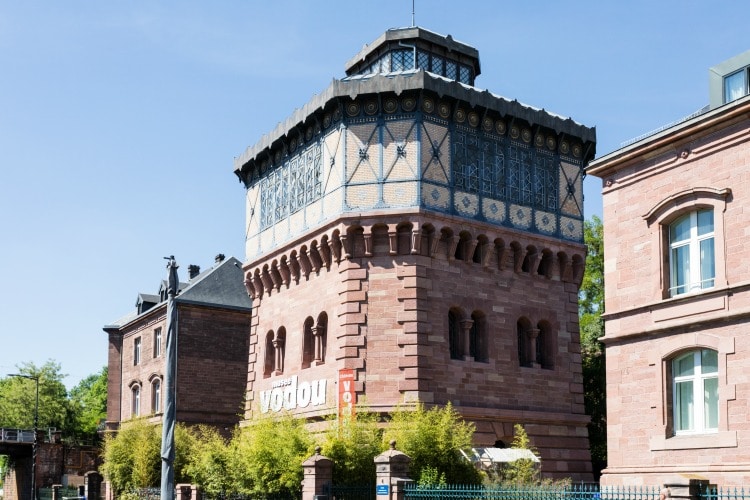
Boat Tours
Two boat tours from Batorama are available on the River Ill either in open or covered boats: one lasts 45 minutes, the other an hour and ten minutes. I recommend the longer one as you get a comprehensive overview of the city and its many interesting sites.
Embark from the pier at the Place du Marché aux Poissons by the Rohan Palace on the Grand Île. Sailing through two locks, the boat passes the Covered Bridges and the Vauban dam and eventually reaches the Neustadt Imperial Quarter, built by the Germans during the annexation of Alsace-Moselle between 1871 and 1918. It’s home to the Palace of the Rhine, the Opera, the Library, and the University Palace.
Leave Grand Île and follow the River Ill to the European Quarter, site of the European Parliament and the European Court of Human Rights. The boat turns around here and sails back to Grand Île and the departure point.
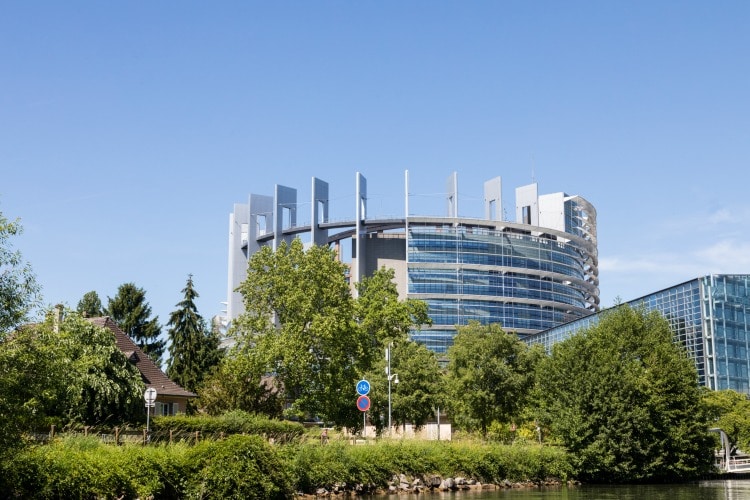
Culinary Adventures
What could be better than ending a twilight tour with a nice dinner? If you feel like experimenting consider Au Cèdre, possibly the best Lebanese restaurant in town. The friendly staff will explain any item on the menu, like the assorted Mezzeh, small tapas-like dishes that can be ordered for two or three people. Mezzeh for three consists of ten delicious hot and cold dishes, more than enough for four, actually. It’s a visual delight to see the table covered with so many large and small plates and bowls filled with aromatic food of different colors, textures, and flavors.
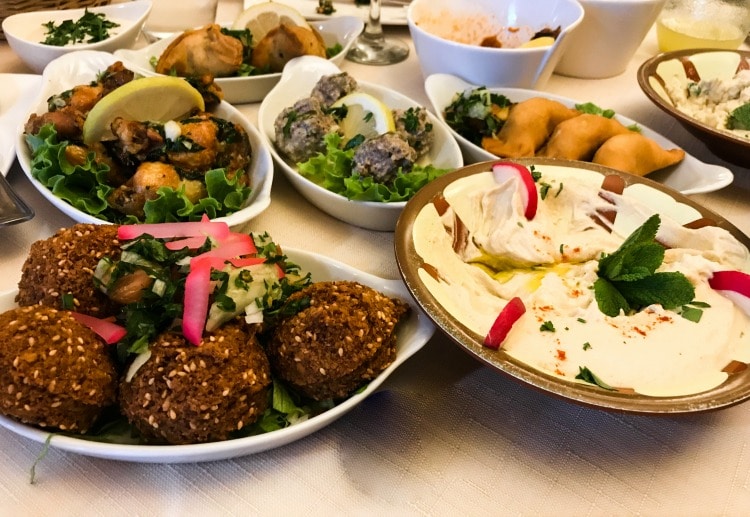
Alsatian Specialties
On the other hand, if you’re longing to sample the local cuisine I suggest you try Au Vieux Strasbourg. A cozy place with wood-paneled walls, red table cloths and frilly red lampshades, it offers a large selection of typical Alsatian dishes such as Choucroute Alsacienne au Riesling (Sauerkraut with bacon, sausage and smoked pork chops) and Tarte Flambée, a paper thin flatbread topped with fromage blanc, pork lardons, thinly sliced onions, and herbs — a simple dish that’s quite addictive.
[alert type=white]
The country code for Strasbourg is +33.
What to See and Do
Wine Cellar of Strasbourg Hospices – 1, Place de l’Hôpital F – 67091 Strasbourg Cedex; Tel. + 33 3 88 11 64 50; www.vins-des-hospices-de-strasbourg.fr/en
Château Musée Vodou – 4 rue de Koenigshoffen, 67000 Strasbourg; Tel. +33 3 88 36 15 03 www.chateau-vodou.com/en
Batorama – 18 place de la Cathédrale 67000 Strasbourg; Tel : +33 (0)3 69 74 44 04; www.batorama.com/en
Where to Eat:
Au Cèdre – 1, rue du Saint Gothard Strasbourg; Tel: 03 88 25 14 69; www.au-cedre.com
Au Vieux Strasbourg – 5 rue du Maroquin 67000 Strasbourg; Tel. 03 88 32 41 89; www.vieuxstrasbourg.fr
[/alert]

